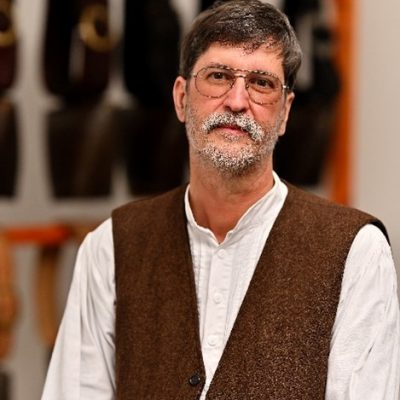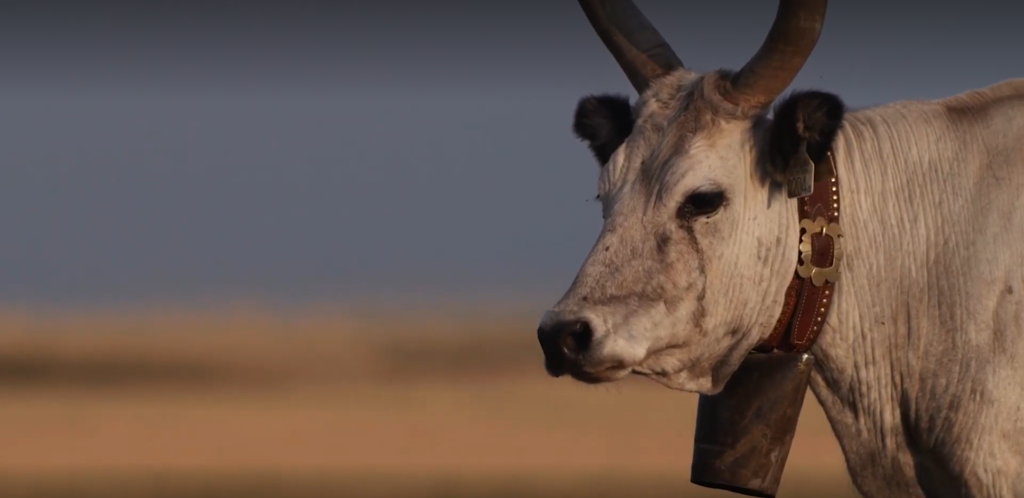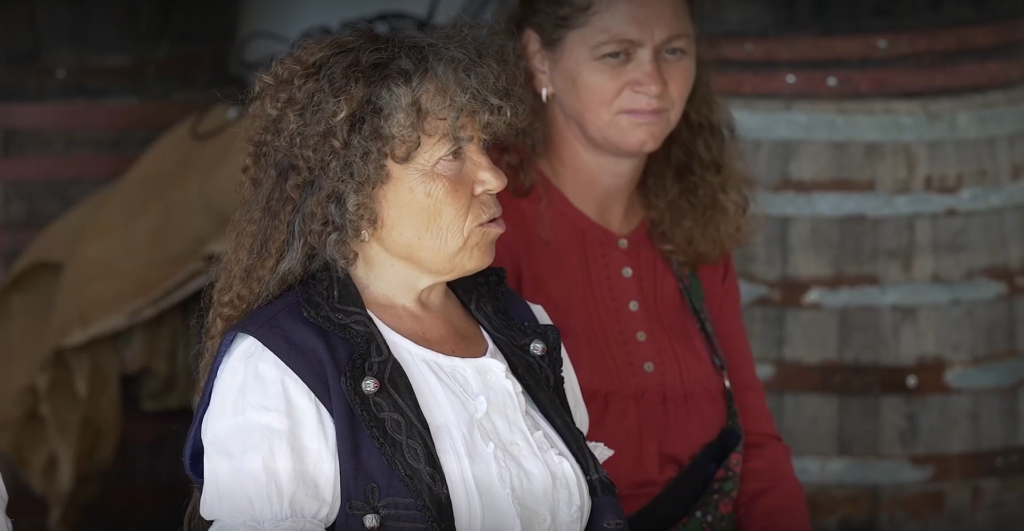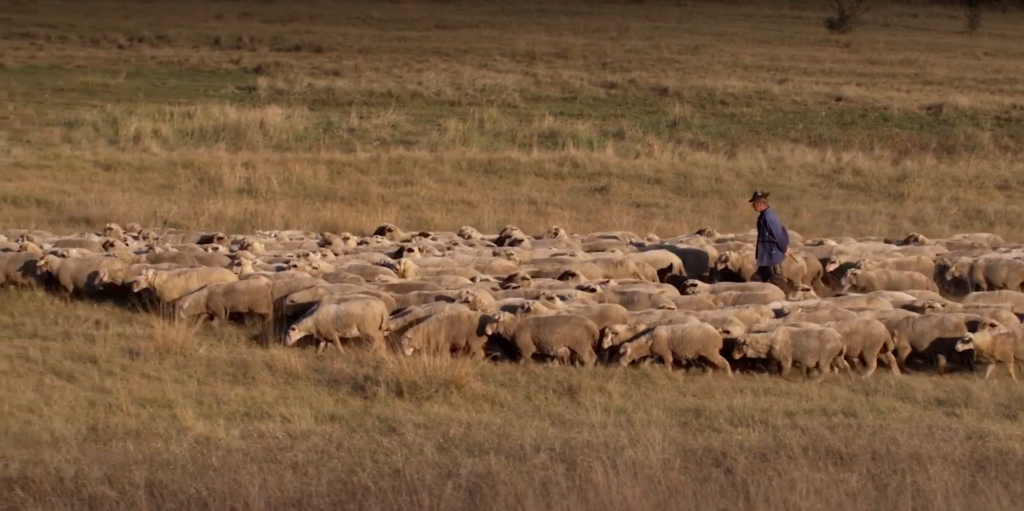Tapping traditional herders’ wisdom to nurture biodiversity
By Fintan Burke
An ethnoecologist has spent 15 years working with herders in his native Hungary and elsewhere to see how their ‘traditional ecological knowledge’ and biodiversity goals can work together to develop a tradition-based grazing system that is good for animals and other species.
Agricultural researchers say traditional farming methods offer lessons on how to balance nature restoration and agricultural goals.
Dr Zsolt Molnár is an ethnoecologist at the Hungarian Centre for Ecological Research. He has spent the last 15 years working with herders in his native Hungary and elsewhere to see how their ‘traditional ecological knowledge’ and biodiversity goals can work together. The interview has been edited for length and clarity.

Dr Zsolt Molnár from Ökológiai Kutatóközpont, the Hungarian Centre for Ecological Research (CER).
FB (UWN): What could nature restoration look like for the continent’s grasslands?
ZM: There are two main types of high nature-value grasslands in Europe; one is developed under long-term native herbivore grazing since the Ice Age. These are the ancient primary grasslands in Central and Eastern Europe. If you don’t graze these grasslands, then the ecological quality often decreases.
The other type of high nature-value grasslands are the semi-natural grasslands that were developed from forests and maintained by extensive mowing and grazing. If you abandon these grasslands, the forest returns. That’s happening all over Central, Western and Southern Europe, and Northern Europe especially. You lose these grasslands because there’s a regeneration of nature, but the issue is that it’s a regeneration only of forests. So we have to keep grasslands to maintain the biodiversity that has developed on them.
For this, you need animals. Fencing them off and letting them graze is one way of managing them, but it has turned out to not be the best for conservation, because you have unorganised, patchy under- and overgrazing. You need people who can properly manage the livestock.
FB (UWN): What’s your relationship like with the herders in Hungary?
ZM: It’s a 15-year-old, living relationship. These herders have become our colleagues, teachers, friends, and students. We exchange information through field visits during their work, but also conventional interviews. The key is the ‘knowledge co-production’ part of the research, where we put our collective knowledge together to develop something which did not exist before, neither in science nor in traditional knowledge.
FB (UWN): Traditional knowledge is being used to manage herds and maintain biodiversity. Can you walk me through exactly how this process works, what type of strategies they’re using?
ZM: Traditional herders have a strategy on how to fulfill the requirements of the livestock and also manage the pasture in an optimal way. This was best described by the livestock scientist Michel Meuret as the ‘menu model’, which means that throughout the day the herder prepares a series of foods to fill the livestock in a healthy way.
This includes a ‘starter’ and a ‘main course’. When animals get bored, you can lead them to some other food, which can be better or worse than the main food. This changes what they want to eat. In the afternoon, you again give them some starter like a legume species that is both tasty and nutritious, and then you have the ‘main course’ again, which is the dominant grass of the pasture. At the end of the day, you give them some type of ‘dessert’, usually at a legume-rich patch of land. If you ask a knowledgeable herder anywhere in the world about this, they will reply that they have this menu model, depending on the landscape, of course.
In Europe today, we need herders who are traditionally managing the area, but also knowledgeable about biodiversity, and understand the ecological needs of the plant and animal species that are rare, endemic, and invasive to their area. They can co-produce knowledge with the conservationists, rangers and ecologists to develop a tradition-based grazing system that is good for both the animals and local protected and other species.
FB (UWN): It sounds like a two-way street for the herders’ and conservationists’ interests
ZM: A herder needs to know about the species conservationists want to protect. If they have reciprocal trust and can collaborate, then herders can think how they should manage the land. For example they could choose to graze one area only for a week, so local plants can grow and the grass will not grow too high for the livestock.
We have to acknowledge that herders’ deep ecological knowledge is not equal with the deep ecological knowledge of ecologists or conservationists. There’s a big overlap, but there are domains that are not known by either group.
FB (UWN): You are now working with other researchers in Europe on improving biodiversity. Can you tell me a bit more about that?
ZM: We need and want to have transformative change. Traditional herders are disappearing because they are not respected, or they cannot collaborate with people who design European agricultural regulations and subsidies.
In the Hungarian case study of the BIOTraCes project we do several things to change this. One is that we support young and middle-aged herders to network because they are few in numbers and very often isolated. There are good examples of this in Spain, where such networking has been happening for decades.
Another is to promote the role of women in herding. Traditionally herding is considered ‘a man’s job’, though even in this case there are many aspects in herding where women have a leading role, like the preparation of milk products, sorting out the bureaucratic stuff around farming, and running the household. So we are also helping Hungarian women herders to network so they get visibility.
During the BIOTraCes project we would like to establish a ‘herding school’ in Hungary. It has to be school-based and practice-based. However, if you establish it in one place in the country, many young people will never attend, so you have to have some sort of a network.
FB (UWN): Do you feel that these herders have been ignored in conversations?
The Bible is filled with stories of herders. Jesus is called the ‘herder’ (pastor), and the people are called the ‘flock’. Likewise in Hungarian folk tales, a princess falls in love with a pig herder or a shepherd.
All Hungarians know about the Bible and folk tales, though none think about why they are the protagonists of these stories. Herders are learning directly from the livestock, from cattle, sheep and pigs, and from nature, so the knowledgeable herders become wise. We want to see that the herder is standing on the pasture next to a flock doing nothing. But actually, he’s planning the menu and monitoring how to adjust it for that day.
We made a film with a herder to explain herders’ knowledge, where it’s just the herder watching sheep graze the pasture for three hours. But the interesting thing is the herder actually explains what he’s doing, while seemingly doing nothing. Two years after uploading it on YouTube it has now reached over half a million viewers and 100,000 of the viewers watched the whole three-hour film. Delighted by this, we also prepared a version in English.
This is how people get familiar with something which they have in their mind. All nations in Europe have a herding history, and have deep cultural roots in herding, but it’s disappearing from the mindset of people because it’s seen as outdated in society.
Zsolt’s ‘An Afternoon on the Pasture’ herder’s film.
This article was originally published on University World News (UWN) on 05 August 2023: Tapping traditional herders’ wisdom to nurture biodiversity (universityworldnews.com)


